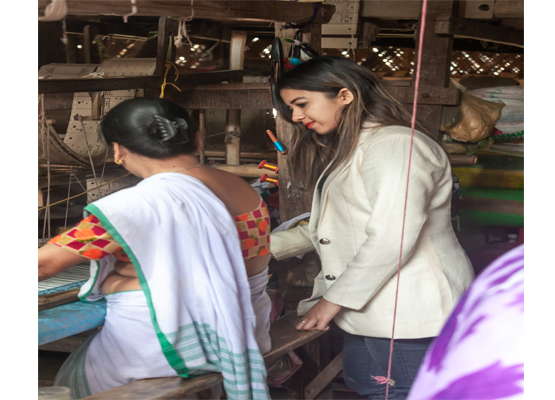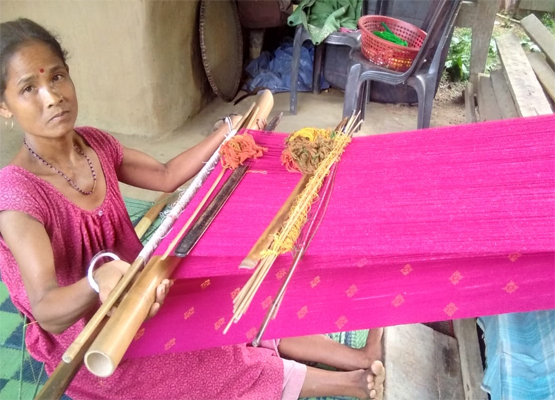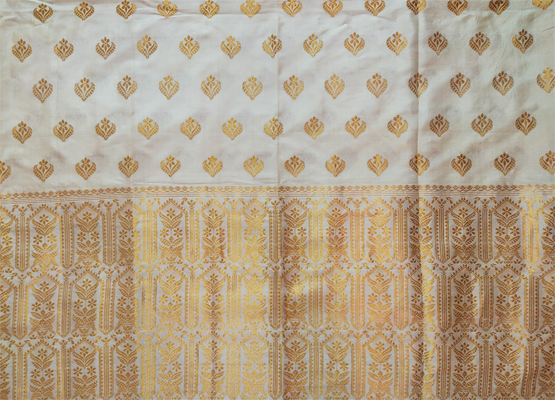
Handloom weaving is not only the lifeblood but also an integral aspect of north-eastern culture and identity. This article focuses on the culture of weaving in the state of Assam. Weavers are present both in the tribal and non-tribal populations of Assam, more so the tribal populations . Tribes like the Boro-Kachari, Dimasa Cachari, Mishing, Mech, Karbi Anglong and Lalung are all part of the community of weavers.
Cotton, muga, pat (mulberry silk) and eri (endi) are the main fabrics that are woven in Assam. Textiles like shawls, saris, furnishings and bedspreads are usually woven from pure Assamese cotton. Chadars and Mekhalas - which is the traditional dress worn by indigenuous Assamese women - are also made from this cotton.


The patterns generally woven by the weavers of Assam showcase human figures, flowers, birds, animals and diamonds, with the designs being symbolic of the different ethnic groups and tribes of the area. Geometric patterns embellished with floral designs are woven on strips of cloth with traditional colours using a loin-loom. These strips are then stitched together to make a bigger garment.

